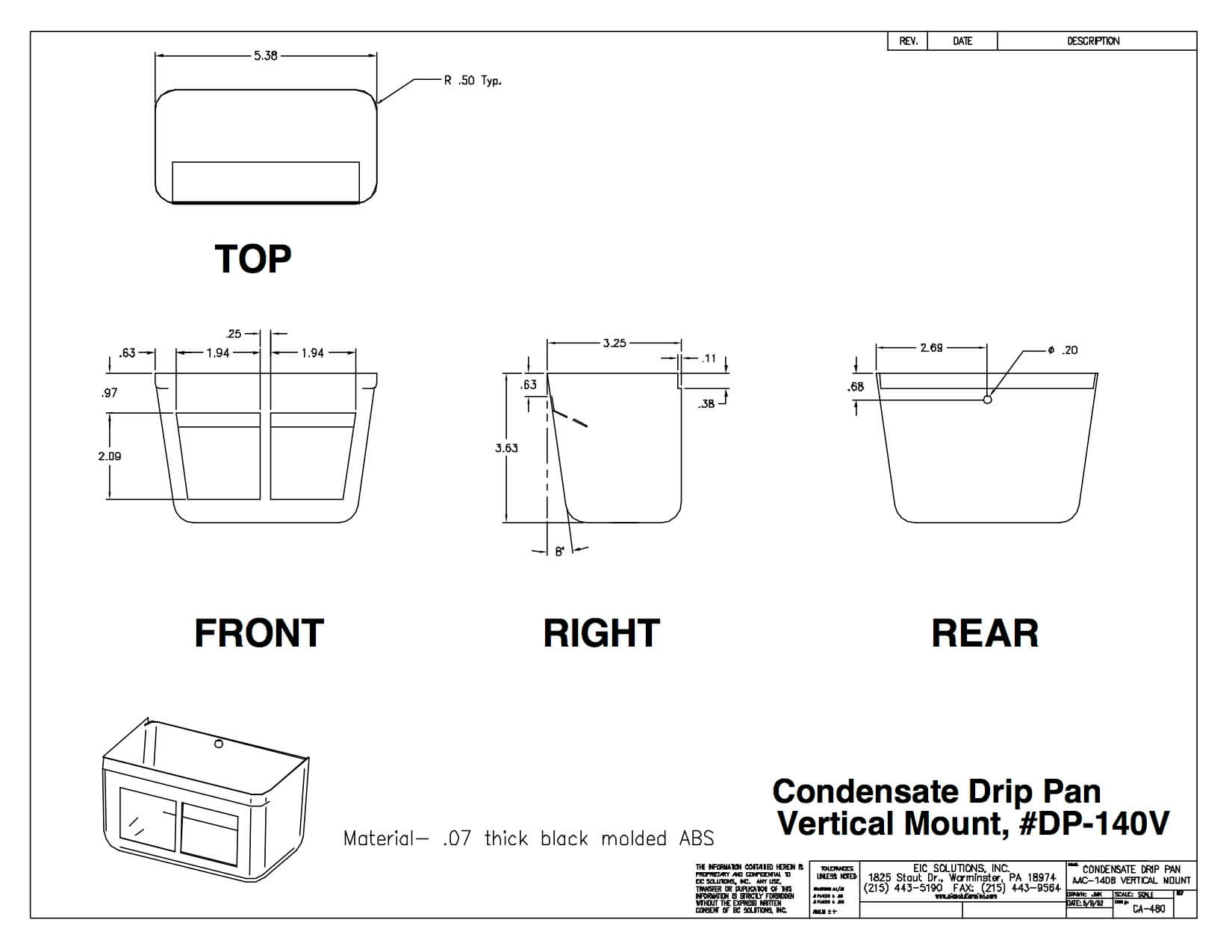
With condensation comes the potential for costly equipment damage and process down-time. The most common problems include condensation build up, improper drainage, and condensation spray. If condensation is not drained from the air conditioner it can accumulate and spill over into the enclosure. If the condensation builds up close to the fans on the air conditioner, it can spray into the enclosure and on to the systems the enclosure is designed to protect. These critical problems need to be addressed to protect sensitive electronics.
In the case of Class 1, Div. 2 condensate management, many enclosures cannot have a free-flowing drain line to the exterior environment. This is due to purging of the enclosure or the presence of ignitable gases in the ambient air. EIC recommends using collection containers within the enclosure that need to be manually emptied once a certain level of condensation has built up. Alternatively, some applications are well suited for a simple looped drain. This loop will hold a certain amount of liquid at the base of the loop and only allow condensate to exit when it fills above the upper part of the loop (similar to a sink trap).
Condensation always has the potential to occur when cooling the air. Don’t pay the price of damaging your housed components. Implementing a condensation management solution could be the difference between smooth operation and operational failure. EIC’s knowledgeable sales engineers can help recommend a condensation management solution that fits your unique needs.
